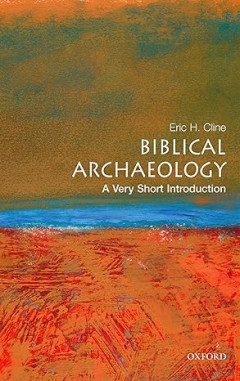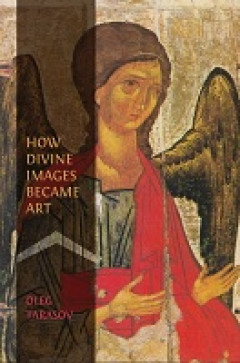Ditapis dengan
E-book The Elemental Analysis of Glass Beads : Technology, Chronology and Exc…
Glass bead studies, using increasingly sophisticated methods, have become important in examining archaeological questions related to technology, chronology, and exchange in the ancient world. In this introductory chapter, the goal is to provide a context for the case studies presented in this volume, within the broader field of glass bead studies. For that purpose, we briefly review th…
- Edisi
- -
- ISBN/ISSN
- 9789461664655
- Deskripsi Fisik
- 393 hlm
- Judul Seri
- -
- No. Panggil
- 930.1 DUS t

E-book Between the 3rd and 2nd Millennia BC : Exploring Cultural Diversity an…
It is generally agreed that during the 3rd millennium BC (Chalcolithic) and the 2nd millennium BC (Bronze Age) complex transformations of the social dynamics within the diverse communities inhabiting the different regions of Europe occurred. This book intends to revisit such consensus by highlighting how researchers explain these transformations a…
- Edisi
- -
- ISBN/ISSN
- 9781789699234
- Deskripsi Fisik
- 157 hlm
- Judul Seri
- -
- No. Panggil
- 930.1 LOP b

E-book Biblical Archaeology: A Very Short Introduction
Public interest in biblical archaeology is at an all-time high, as television documentaries pull in millions of viewers to watch shows on the Exodus, the Ark of the Covenant, and the so-called Lost Tomb of Jesus. Important discoveries with relevance to the Bible are made virtually every year--during 2007 and 2008 alone researchers announced at least seven major discoveries in Israel, five of th…
- Edisi
- -
- ISBN/ISSN
- 9780195342635
- Deskripsi Fisik
- 169 halaman
- Judul Seri
- -
- No. Panggil
- 220 CLI b
E-book Plant Food Processing Tools at Early Neolithic Göbekli Tepe
Functional analyses are the focus of this study. They were conducted partly using classical methods of use-wear analysis like macroscopical and microscopical optical analyses. The use of tactile analyses on the other hand is new. Also new are methods to differentiate between products of cereal processing and meals made of cereals, and quantification methods of wear.…
- Edisi
- -
- ISBN/ISSN
- 9781803270937
- Deskripsi Fisik
- -
- Judul Seri
- -
- No. Panggil
- 930.1 DIE p
E-book Pits and Boots : Excavation of Medieval and Post-medieval Backlands un…
The archaeological works at the Bon Accord Centre, Aberdeen, have identified the changing nature of this area of the medieval and post-medieval city at the junction of the two major thoroughfares of Upperkirkgate and Gallowgate. In the earliest centuries of the medieval burgh’s existence, the site formed part of an industrial quarter, periphe…
- Edisi
- -
- ISBN/ISSN
- 9781789694888
- Deskripsi Fisik
- 369 hlm
- Judul Seri
- -
- No. Panggil
- 930.1 ROY p
E-book Death Revisited : The Excavation of Three Bronze Age Barrows and Surro…
Barrows are the most common prehistoric monuments that can still be found in the European landscape today. Once erected as burial markers during prehistory, burial mounds have since served as important anchors in the landscape. Burial mounds built in the 3rd millennium BC were sometimes used to bury the dead until the 1st millennium BC (Bourgeois 2013; Theunissen 199…
- Edisi
- -
- ISBN/ISSN
- 9789088905827
- Deskripsi Fisik
- 190 hlm
- Judul Seri
- -
- No. Panggil
- 930.1 BOU d
E-book Double-Sided Antler and Bone Combs in Late Roman Britain
Double-Sided Antler and Bone Combs in Late Roman Britain offers the first detailed study and catalogue of a comb type that represents a new technology introduced into Britain towards the end of the 4th century AD and a major signifier of the late fourth- to fifth-century transition. Their end-plates were worked into a variety of decorative profiles, some clearly zoomorphic. Over time this decor…
- Edisi
- -
- ISBN/ISSN
- 9781803276458
- Deskripsi Fisik
- 148 halaman, ilus.
- Judul Seri
- -
- No. Panggil
- 930.1 CRU d
E-book Travelling the Korosko Road : Archaeological Exploration in Sudan’s …
We wanted to have this experience to assess whether our hypotheses were well founded. Hassan, an old camel driver of few words but who knew all the “secrets” of a desert journey, served as our guide.From the expedition diary: 12 February 1990: “Since a few hours, we have been travelling on our teetering rides across an immense stony plain towards Jebel Maqran, a tiny outcrop tha…
- Edisi
- -
- ISBN/ISSN
- 9781789698046
- Deskripsi Fisik
- 251 hlm
- Judul Seri
- -
- No. Panggil
- 930.1624 CAS t
E-book Early Settlers of the Insular Caribbean: Dearchaizing the Archaic
This volume is a result of the New Insights into the Archaic of the Circum-Caribbeansession that we chaired at the 81st Annual Meeting of the Society for American Archaeology in Orlando, Florida, in April 2016. The session was organized in the context of the Island Networks project supported by the Netherlands Organisation for Scientific Research (NWO-gr. nr. …
- Edisi
- -
- ISBN/ISSN
- 9789088907821
- Deskripsi Fisik
- 342 hlm
- Judul Seri
- -
- No. Panggil
- 930.1 ANT e

E-book How Divine Images Became Art: Essays on the Rediscovery, Study and Col…
How Divine Images Became Art tells the story of the parallel ‘discovery’ of Russian medieval art and of the Italian ‘primitives’ at the beginning of the twentieth century. While these two developments are well-known, they are usually studied in isolation. Tarasov’s study has the great merit of showing the connection between the art world in Russia and the West, and its impact in the c…
- Edisi
- -
- ISBN/ISSN
- 9781805111580
- Deskripsi Fisik
- 230 halaman
- Judul Seri
- -
- No. Panggil
- 909.07 ROC h
 Karya Umum
Karya Umum  Filsafat
Filsafat  Agama
Agama  Ilmu-ilmu Sosial
Ilmu-ilmu Sosial  Bahasa
Bahasa  Ilmu-ilmu Murni
Ilmu-ilmu Murni  Ilmu-ilmu Terapan
Ilmu-ilmu Terapan  Kesenian, Hiburan, dan Olahraga
Kesenian, Hiburan, dan Olahraga  Kesusastraan
Kesusastraan  Geografi dan Sejarah
Geografi dan Sejarah